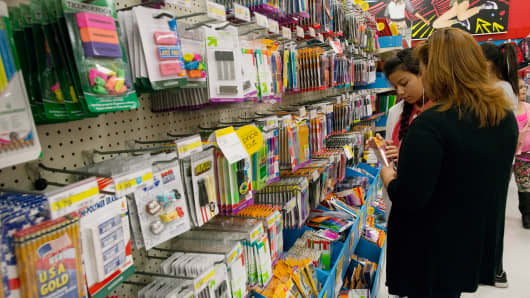It's August, which usually means summer comes to an end and back-to-school shopping heats up — but maybe not so much this year.
Shoppers have been hitting the shelves for a month already thanks to Amazon's Prime Day, and retailers need to step up their game to keep their spot in the back-to-school shopping season.
New data provided to CNBC show that the school shopping season — second in importance only to the holidays — is starting earlier and not running as late into the year, thanks to Prime Day in July, and other retailers following suit. Specifically, the online sale was the peak of back to school in 2015, according to Cardlytics, a firm that tracks purchasing data. No other week of shopping during July and August came close last year.




